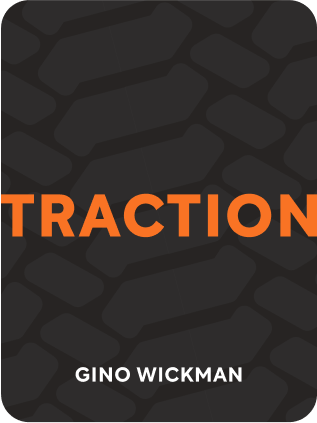

This article is an excerpt from the Shortform book guide to "Traction" by Gino Wickman. Shortform has the world's best summaries and analyses of books you should be reading.
Like this article? Sign up for a free trial here .
What is the Entrepreneurial Operating System? What are its components and purpose?
The Entrepreneurial Operating System (EOS) is a leadership and management framework developed by entrepreneurial expert Gino Wickman. There are six components that make up the EOS of any business enterprise: traction, people, data, issues, process, and traction.
Keep reading to learn about the Entrepreneurial Operating System and its components.
The Entrepreneurial Operating System
Most entrepreneurs get caught up in worrying about countless details. However, every organization or system has a number of key components—and when they’re set up correctly, your business functions smoothly without your constant oversight.
The six key elements of any business or organization are:
1) Vision: You need a compelling vision for your business that you communicate clearly so everyone can focus their energy on it and help you achieve it.
This book explains how to define your vision, which capsulizes who you are as an organization, where you’re going, and how you’ll get there. You develop a vision by identifying your “sweet spot,” the area where you excel; defining a marketing strategy; and setting one-, three-, and 10-year goals.
2) People: You need to have the right people in the right positions. People who are wrong for your company, or are in the wrong positions, hurt your business. A tool introduced in Chapter 4 helps you identify the right people, those who share your core values. Another tool (GWC) helps you put people in the right jobs by assessing whether they “get,” want, and are capable of the job.
3) Data: By creating a “Scorecard” or weekly report on a few key numbers, you can regularly check the vital signs of your business, quickly see and solve problems, and predict the future—without waiting for financial statements. You can also give each person a metric or number she’s accountable for.
4) Issues: You need to systematically identify and address issues before they undermine your business. To do this, maintain and regularly review an issues list (covered in Chapter 6). When you take the time to solve a problem, you’ll save up to 10 times that amount of time dealing with the problem or its consequences later.
5) Process: Your processes are the way you do business. You need to identify, address, and document each of your core processes, and continually improve them. Many entrepreneurs don’t fully appreciate the value of having the right processes—however, sound processes create efficiency and make your business scalable and more profitable.
6) Traction: Traction—the ability to execute, or make the company’s vision a reality—requires two things: 1) 90-day priorities for everyone, and 2) regular, focused, productive meetings at every level.
These six components make up the Entrepreneurial Operating System model. In any given area, most businesses are less than 50% effective. Achieving 80% effectiveness in every area will create a smoothly functioning, effective operation. The myriad details that used to consume you will take care of themselves.

———End of Preview———
Like what you just read? Read the rest of the world's best book summary and analysis of Gino Wickman's "Traction" at Shortform .
Here's what you'll find in our full Traction summary :
- How a first-time entrepreneur can gain the traction needed to grow
- Why hard work and determination aren't enough for your business to succeed
- The 6 key principles of the Entrepreneurial Operating System






